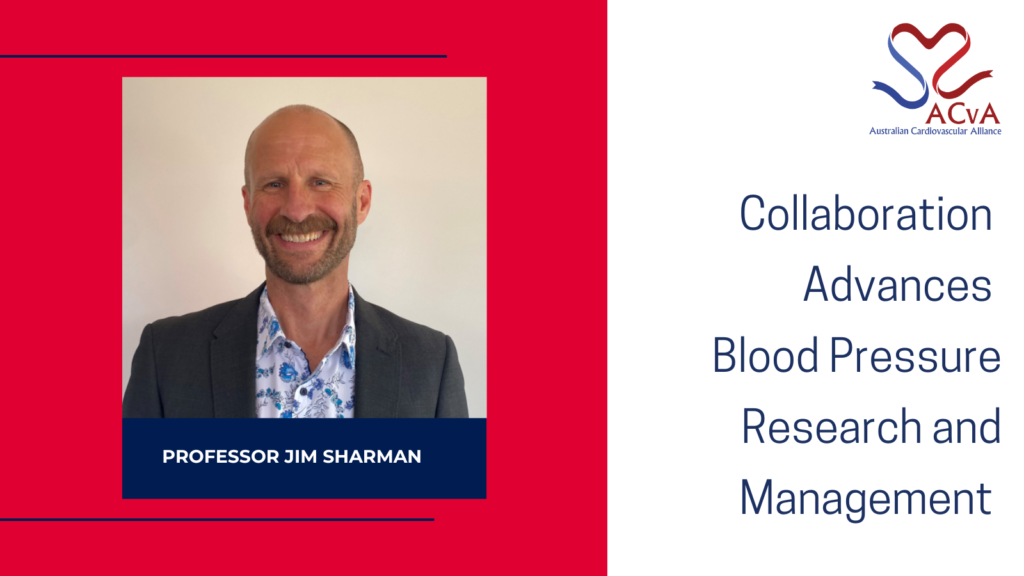
Getting in on the ‘collective conversation’ led Professor Jim Sharman and his blood pressure research to both the National Hypertension Taskforce and the Australian Cardiovascular Alliance’s Health Research Leadership Forum.
Jim Sharman is a Professor of Medical Research and Deputy Director at the Menzies Institute for Medical Research. He also heads their Blood Pressure Research Group.
High blood pressure is one of Australia’s most pervasive health challenges. It affects one in every three adult Australians and stands as the leading risk factor for cardiovascular disease (CVD) and stroke. Currently, only 32% of Australians with high blood pressure have it under control. An issue of this scale needs cross-sector collaboration and commitment to combine resources, expertise, and efforts.
Professor Sharman’s involvement with the Australian Cardiovascular Alliance (ACvA) began two years ago when the CEO, Kerry Doyle PSM OAM, visited the Menzies Institute in Hobart. This visit provided him with a deeper understanding of the ACvA’s strategic objectives. “I could see the immense value of ACvA’s work in fostering collaboration and connectivity in a very strategic national way to improve cardiovascular health outcomes,” he recalls.
He witnessed this with the establishment and launch of the National Hypertension Taskforce. “There was so much planning, strategy and collaboration to get the Taskforce up and running.”
With over 20 years of experience in blood pressure research, Professor Sharman was eager to contribute. “Translating key findings from our research and that of others to achieve better health outcomes on a national scale resonated with me so strongly that I absolutely needed to be part of it,” he says.
The National Hypertension Taskforce, led by the Australian Cardiovascular Alliance and Hypertension Australia, is a national collaboration of 25 organisations across the health spectrum including peak bodies, researchers, clinicians, and consumers with lived experience.
The Taskforce is working towards the goal of improving blood pressure control rates in Australia from 32% to 70%. “If we can achieve that, we would’ve improved cardiovascular outcomes for people, reducing avoidable hospitalisations and deaths,” says Professor Sharman.
He currently serves on the National Hypertension Taskforce Steering Committee and co-chairs the working group focused on a systems and data-based approach to blood pressure management, alongside Dr. Nelson Wang.
He is optimistic about their progress saying, “The people we’re working with are terrific. By embedding better blood pressure measurement and cardiovascular management in general practice, we can significantly improve clinical outcomes.”
He values the ongoing opportunity to work collaboratively across organisations. “You can see a collaborative effort now, where previously it was quite fragmented. We have a collective conversation moving forward which is really exciting.”
Although his work is local, the impact is national. “This is for all of Australia. Our work in Tasmania aims to understand optimal implementation strategies, which we then plan to scale nationally,” he explains.
Professor Sharman is inspired by the collective drive to enact change. “There’s something unique here, a nationwide cardiovascular research and clinician workforce that is mobilised towards key strategic outcomes. That’s why I’m dedicating so much effort to this initiative—it’s an amazing opportunity to be part of.”
